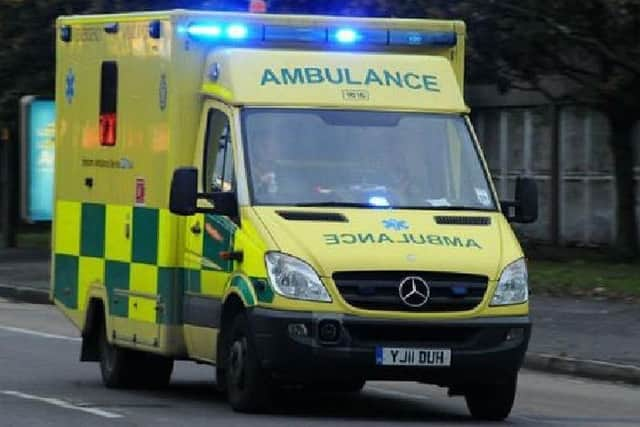Heart attack and stroke victims in Hertfordshire wait over 43 minutes for ambulance according to new figures
and live on Freeview channel 276
Potential heart attack and stroke victims in Hertfordshire and West Essex are waiting an average of 43 minutes for an ambulance to arrive, according to new figures.
Data, obtained through a Freedom of Information request by the Liberal Democrats, revealed that the average response time for the most urgent calls (category one) was nine minutes – an increase of 15% since 2019.
Advertisement
Hide AdAdvertisement
Hide AdMeanwhile, the average wait for category two calls – incidents like strokes and potential heart attacks – was over 43 minutes.


An East of England Ambulance Service spokesperson said: "The NHS is currently facing incredibly high demand and we are working very closely with hospitals to reduce handover delays to improve care to our patients.
“We are doing all we can to boost the number of ambulances we have on the road, including recruiting additional clinical staff and using non-clinical drivers.
“We’re also working to reduce the number of patients going to hospital, including directing patients to urgent community response services when appropriate.”
Advertisement
Hide AdAdvertisement
Hide AdLib Dem parliamentary candidate for South West Herts, Victoria Collins, backs her party’s five-point plan to support ambulance services. She said: “Behind these figures are devastating stories of people left stranded for hours, or families across South West Hertfordshire watching a loved one die before a paramedic could reach them.”
Hemel and South West Herts Labour were approached for comment.
Hemel Hempstead’s MP Sir Mike Penning said that the waiting time of 43 minutes is unacceptable. He said: “If this is the average, then some people are waiting considerably longer. The problem is a combination of too much regionalisation with ambulances coming to patients in my constituency from as far away as Essex or Suffolk, and lines of ambulances being kept at Watford hospital A&E waiting to hand over patients.
“As I’ve said consistently for the past 20 years, what we need is a new hospital with A&E to serve the people of West Hertfordshire. The A&E located in the back streets of Watford simply cannot cope. Everyone knows this and yet the Trust are seemingly unwilling to solve the problem.
Advertisement
Hide AdAdvertisement
Hide Ad“The Trust is letting the people of West Herts down – Hemel Hempstead and St Albans in particular.”
In response to Sir Penning’s comments, a spokesperson from West Hertfordshire Teaching Hospitals NHS Trust explained that an ‘ambulance-only’ stretch of the relatively new Thomas Sawyer Way ensures that emergency vehicles can reach Watford General Hospital’s A&E easily.
The spokesperson added: “There are many factors that can lead to delays in being seen. The journey time to Watford General Hospital by ambulance is in line with the national figures. However, we acknowledge that waiting times for patients in need of urgent care are longer than we would like and we are working hard together with colleagues in the ambulance trust to bring these down.
“We share Sir Mike’s view that a new hospital for west Hertfordshire is needed and we are continuing to progress our plans for a new hospital on land next to the current one at Watford. The emergency department in our new hospital will be almost twice the size of what we have now and will help us deliver care more efficiently.”
